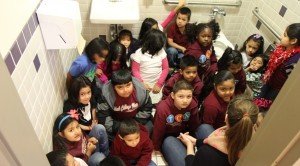
1. What led you to do this research?
There is limited research on the impact of community traumatic events on educational outcomes, perhaps because it is impossible to manipulate exposure to traumatic events in experimental settings. The 2002 Beltway Sniper Attacks serve as a natural experiment for assessing the impact of community traumatic events because they were unexpected and generated extreme amounts of stress and confusion over a three week period. The natural experiment is that schools farther away from the attacks serve as a control group, which we evaluate relative to the treatment group of schools closer to attacks.
2. What should everybody know about what you found?
The attacks significantly reduced school-level proficiency rates in schools within five miles of an attack, especially for 3rd and 5th grade mathematics. The harmful effects were larger in disadvantaged schools that serve larger shares of racial minority and low income students. Intuitively, such schools have fewer resources with which to respond to unexpected shocks. The effects are large enough to have impacted many schools’ standing under the Adequate Yearly Progress (AYP) provision of the No Child Left Behind Act, which was in effect at the time.
3. What are you going to do next on this topic?
The biggest limitation of our study, which we hope to address in future research should we find sufficient data, is that we cannot isolate the exact mechanisms through which the trauma associated with the sniper attacks harmed student achievement. Given the current data, we can only speculate about the mechanisms, which likely include some combination of school closures, disruptions to routines, stress at home and in school, and student and teacher absences.
You can read the full article here:
Seth Gershenson and Erdal Tekin. 2015. “The Effect of Community Traumatic Events on Student Achievement: Evidence from the Beltway Sniper Attacks.” NBER Working Paper No. 21055.




Comments